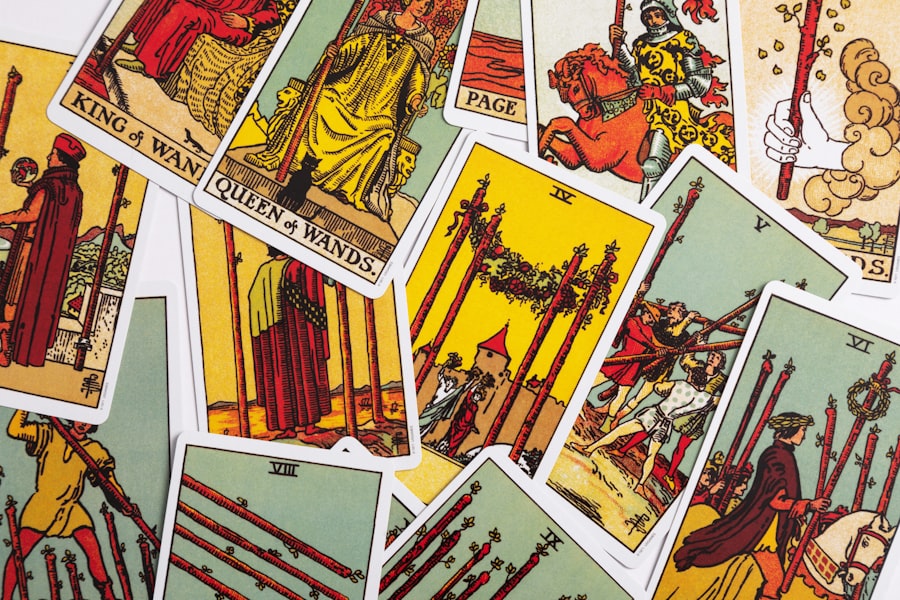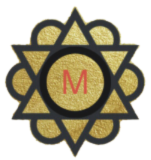
Tarot is a fascinating system of divination that has captivated individuals for centuries. At its core, a tarot deck typically consists of 78 cards, divided into two main categories: the Major Arcana and the Minor Arcana. The Major Arcana comprises 22 cards that represent significant life events, spiritual lessons, and archetypal themes.
Each card in this section, such as The Fool or The Tower, carries profound symbolism and meaning, often reflecting pivotal moments in one’s life journey.
Each suit corresponds to different aspects of human experience—Cups relate to emotions and relationships, Pentacles to material concerns and work, Swords to thoughts and conflicts, and Wands to creativity and action.
Understanding tarot requires more than just memorizing card meanings; it involves grasping the intricate interplay between the cards and the context in which they are drawn. Each card can take on different meanings depending on its position in a spread, its orientation (upright or reversed), and the surrounding cards. This complexity allows for a rich tapestry of interpretations that can provide insights into various life situations.
For instance, drawing the Two of Swords might suggest a stalemate or indecision when paired with the Five of Cups, it could indicate a need to confront emotional pain before making a choice. Thus, the art of tarot reading is as much about intuition and personal interpretation as it is about established meanings.
Key Takeaways
- Tarot is a tool for self-reflection and insight, using a deck of cards with symbolic meanings.
- It can be used to communicate with others by interpreting the cards and their meanings in relation to the question or situation at hand.
- Tarot meditation can help in resolving conflicts by providing a different perspective and insight into the situation.
- Tarot spreads, such as the Celtic Cross, can be used for conflict resolution by providing a structured layout for interpreting the cards.
- Incorporating tarot into conflict resolution techniques can provide a unique and holistic approach to addressing and resolving conflicts.
Using Tarot for Self-Reflection and Insight
Tarot serves as a powerful tool for self-reflection, enabling individuals to delve into their subconscious thoughts and feelings. By engaging with the imagery and symbolism of the cards, one can uncover hidden motivations and desires that may not be immediately apparent. For example, a person grappling with career choices might draw the Eight of Pentacles, which emphasizes diligence and mastery.
This card could prompt them to reflect on their work ethic and whether they are truly committed to honing their skills or if they are merely going through the motions. Such insights can lead to transformative realizations about one’s professional path. Moreover, tarot can facilitate a deeper understanding of emotional states and interpersonal dynamics.
When someone draws the Lovers card, it may evoke thoughts about romantic relationships or choices that require alignment with one’s values. This card encourages introspection about what love means to the individual and how it manifests in their life. By contemplating these themes through tarot, individuals can gain clarity on their emotional landscape, leading to healthier relationships with themselves and others.
The process of interpreting tarot cards can act as a mirror, reflecting back aspects of one’s psyche that may need attention or healing.
Communicating with Others Using Tarot

The use of tarot extends beyond personal introspection; it can also enhance communication with others. When engaging in discussions about complex issues or emotions, tarot can serve as a neutral facilitator that helps articulate feelings and thoughts that might otherwise remain unspoken. For instance, during a conversation about relationship dynamics, drawing cards together can provide a shared language that allows both parties to express their perspectives more openly.
The imagery on the cards can evoke discussions about fears, hopes, and desires in a way that feels less confrontational than direct dialogue. Additionally, tarot can help clarify intentions and expectations in interpersonal relationships. When two friends are navigating a conflict, they might decide to draw cards to explore the underlying issues at play.
If one person draws the Three of Swords, which symbolizes heartbreak or betrayal, it could open up a dialogue about past grievances that need addressing. This approach not only fosters empathy but also encourages active listening as both individuals engage with the insights provided by the cards. By framing conversations around tarot readings, individuals can create a safe space for vulnerability and understanding.
Resolving Conflict Through Tarot Meditation
Conflict resolution often requires a delicate balance of empathy, understanding, and communication. Tarot meditation offers a unique approach to navigating conflicts by encouraging individuals to reflect on their feelings and perspectives in a structured manner. By selecting specific cards that resonate with their current emotional state or conflict situation, individuals can meditate on the imagery and meanings associated with those cards.
For example, drawing the Justice card may prompt one to consider fairness and balance in their interactions with others. During this meditative process, individuals can visualize themselves embodying the qualities represented by the drawn cards. If someone draws the Strength card, they might meditate on cultivating inner courage and compassion when addressing conflicts.
This practice not only fosters personal growth but also prepares individuals to approach conflicts with a clearer mindset. By integrating tarot meditation into their conflict resolution strategies, individuals can develop greater emotional resilience and insight into their own reactions.
Using Tarot Spreads for Conflict Resolution
Tarot spreads are specific layouts of cards that provide structure to readings and facilitate deeper exploration of particular issues. When addressing conflict resolution, certain spreads can be particularly effective in illuminating different facets of a situation. One popular spread is the “Three Card Spread,” which allows individuals to examine the past influences on the conflict, the present dynamics at play, and potential future outcomes.
This straightforward approach can help clarify how past experiences shape current interactions and what steps might lead toward resolution. Another effective spread is the “Relationship Spread,” which focuses on understanding the dynamics between two parties involved in a conflict. This spread typically includes positions for each person’s feelings, motivations, and potential actions.
By drawing cards for each position, individuals can gain insights into how their perspectives align or diverge. For instance, if one person draws the Hermit while the other draws the Two of Cups, it may indicate that one party is seeking solitude for reflection while the other desires connection and partnership. Such revelations can guide discussions toward compromise and mutual understanding.
Incorporating Tarot into Conflict Resolution Techniques

Incorporating tarot into conflict resolution techniques can enhance traditional methods by adding layers of insight and emotional depth. For instance, combining tarot readings with active listening exercises can create a holistic approach to resolving disputes.
This method not only validates each person’s experience but also fosters an environment where solutions can emerge organically. Furthermore, integrating tarot into mediation sessions can provide mediators with valuable tools for guiding discussions. A mediator might use tarot to help participants articulate their feelings or identify underlying issues that contribute to the conflict.
By introducing specific cards that resonate with themes of cooperation or healing—such as The Star or The Empress—the mediator can encourage participants to envision positive outcomes and collaborative solutions. This creative approach transforms traditional conflict resolution into an engaging process that empowers individuals to take ownership of their resolutions while fostering deeper connections among all parties involved. In summary, tarot is not merely a tool for divination; it is a multifaceted resource that can enhance self-reflection, communication, and conflict resolution strategies.
By understanding its foundational elements and applying its insights thoughtfully, individuals can navigate their personal journeys with greater clarity and purpose while fostering healthier relationships with others.
If you are interested in exploring the powerful symbolism of femininity and abundance in Tarot, you may enjoy reading The Empress: Exploring the Powerful Symbolism of Femininity and Abundance in Tarot. This article delves into the meaning behind The Empress card and how it can be used for personal growth and reflection. Just like using Tarot for conflict resolution, understanding the deeper meanings of Tarot cards can provide valuable insights and guidance in various aspects of life.
FAQs
What is Tarot?
Tarot is a deck of cards that are often used for divination, spiritual guidance, and self-reflection. The deck typically consists of 78 cards, each with its own imagery and symbolism.
How can Tarot be used for conflict resolution?
Tarot can be used for conflict resolution by providing insight into the underlying issues, emotions, and perspectives of the parties involved. It can help individuals gain clarity, empathy, and understanding, which can be valuable in resolving conflicts.
Is Tarot a reliable tool for conflict resolution?
The reliability of Tarot for conflict resolution is subjective and varies from person to person. Some individuals find Tarot to be a helpful and insightful tool for gaining perspective on conflicts, while others may not resonate with its use in this context.
Can anyone use Tarot for conflict resolution?
While anyone can technically use Tarot for conflict resolution, it is important to approach the practice with an open mind and a willingness to explore different perspectives. Some individuals may benefit from working with a professional Tarot reader or mediator who is experienced in using Tarot for conflict resolution.
Are there any ethical considerations when using Tarot for conflict resolution?
When using Tarot for conflict resolution, it is important to respect the privacy and autonomy of the individuals involved. It is also important to approach the process with empathy, compassion, and a commitment to seeking positive outcomes for all parties.






